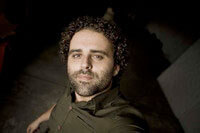After living in New York for six years, Julio returned to Brazil in 2000 and started working at the newspaper Valor Economico in Sao Paulo as a photographer and assistant photo editor. In 2003 he moved to Mozambique where he worked for SOICO Communication Group. Since 2006 Julio has been working as an independent photographer. Julio's projects have been exhibited in galleries and museums worldwide and his work published in magazines such as GEO, Stern, TIME, Le Monde, The Wall Street Journal, C Photo, The Guardian, The New Yorker, Esquire, French Photo, Los Angeles Times, and Leica World Magazine, among others. In 2008 he published his first book, “In a window of Prestes Maia 911 Building”, the culmination of a three year project featuring the residents of a squatted building in Sao Paulo. Julio's work resides in several public and private collections.
